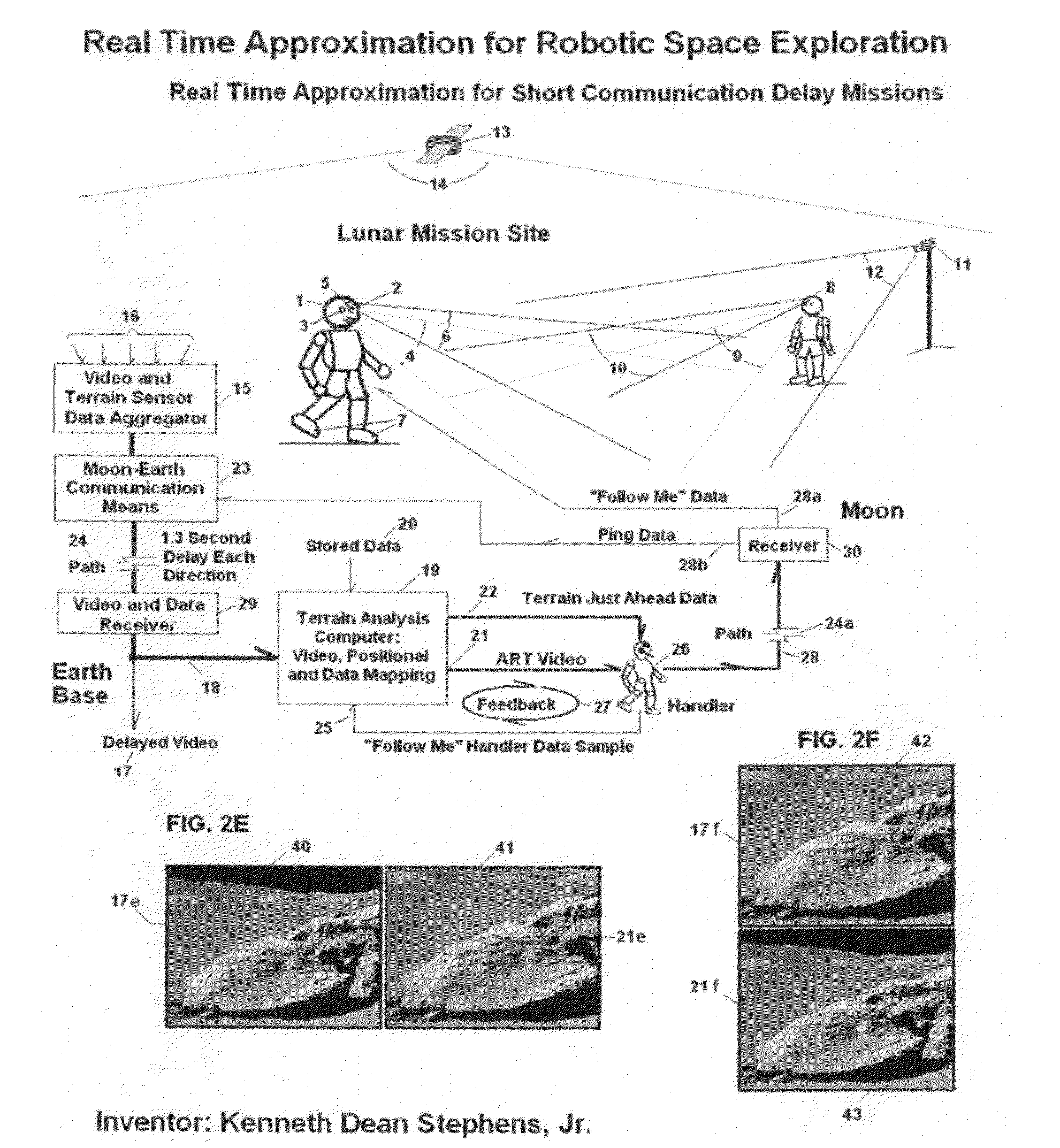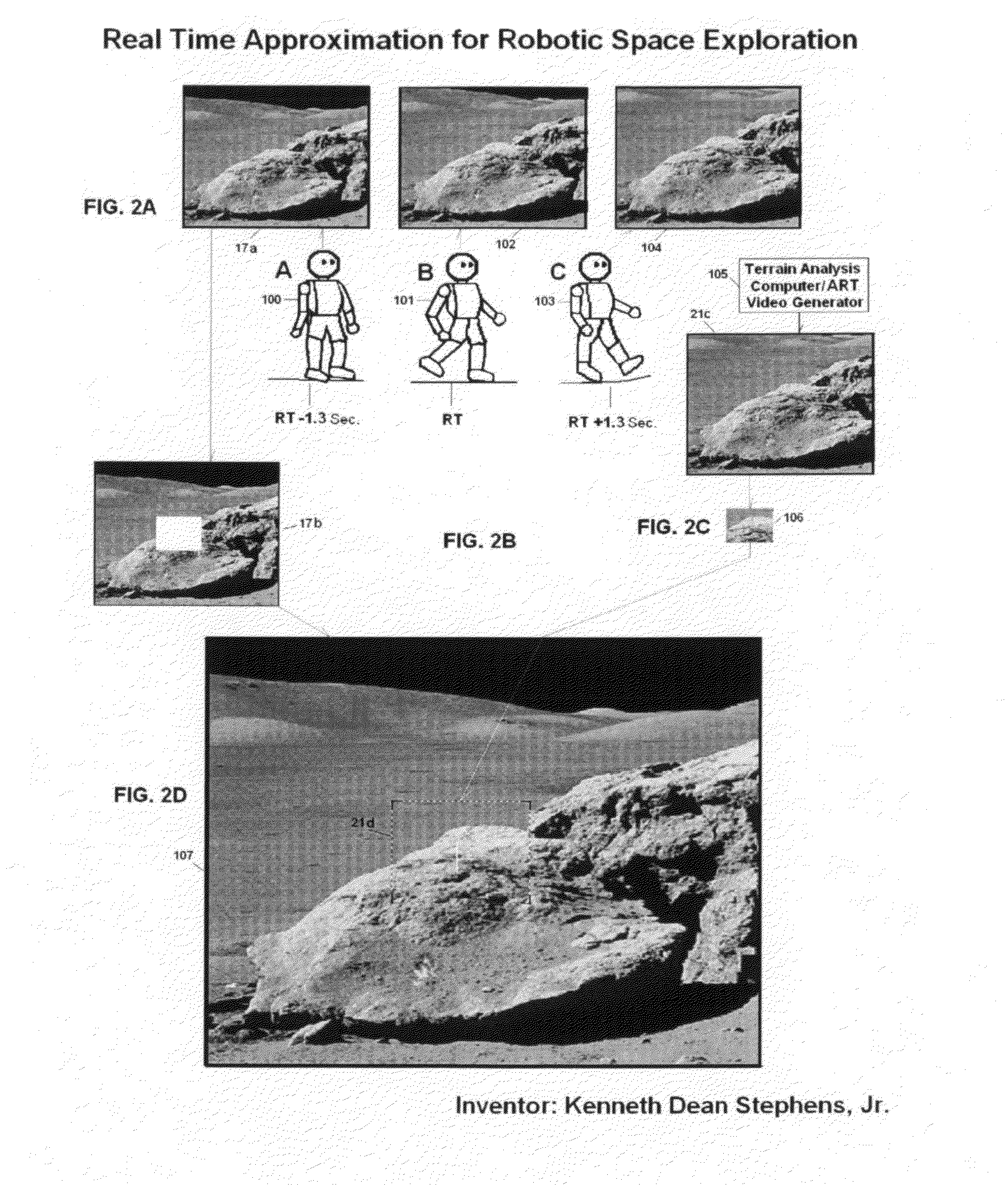Real Time Approximation for Robotic Space Exploration
a robotic space and real-time approximation technology, applied in the field of robotics, can solve the problems of dizziness, nausea and disorientation in the human handler, and agonizingly slow progress of the robotic vehicle mission, and achieve the effect of not affecting the progress of the robotic vehicle, nausea or disorientation, and avoiding dizziness
- Summary
- Abstract
- Description
- Claims
- Application Information
AI Technical Summary
Benefits of technology
Problems solved by technology
Method used
Image
Examples
Embodiment Construction
[0043]FIG. 1 depicts an exemplary proxy robot 1 in accordance with embodiments of the present invention on the surface of the Moon under the control of a human handler 26 on Earth. The proxy robot has two camera “eyes”2 and 3, that focus on an area 4 that the robot is directed to face, streaming live video to a video and terrain sensor data aggregator 15 and Earth-Moon communication means 23. The proxy robot may also contain other terrain sensors such as sensor 5 located in the center of the robot's head above the camera eyes. Sensor 5 scans a region 6 and may contain laser, radar or other ranging or mapping means. Terrain-just-ahead sensors 7 may also be located in the front of each of the robot's boots to map and warn of uneven terrain, rocks, pits and so forth that might hinder forward movement.
[0044]The general mission area may contain other proxy robots 8 which may also be directed to scan the terrain ahead of proxy robot 1, via video 9 and ranging / mapping means 10. In the draw...
PUM
 Login to View More
Login to View More Abstract
Description
Claims
Application Information
 Login to View More
Login to View More - R&D
- Intellectual Property
- Life Sciences
- Materials
- Tech Scout
- Unparalleled Data Quality
- Higher Quality Content
- 60% Fewer Hallucinations
Browse by: Latest US Patents, China's latest patents, Technical Efficacy Thesaurus, Application Domain, Technology Topic, Popular Technical Reports.
© 2025 PatSnap. All rights reserved.Legal|Privacy policy|Modern Slavery Act Transparency Statement|Sitemap|About US| Contact US: help@patsnap.com



